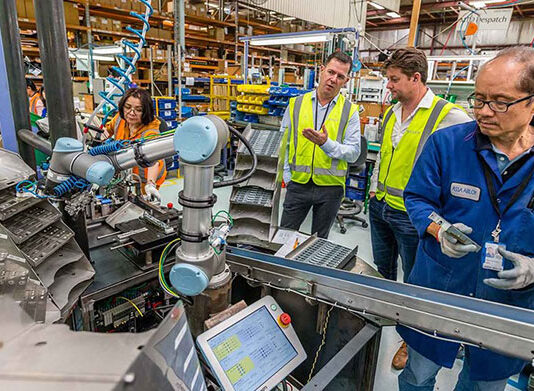Collaborative robots are seeing an increase in adoption in the manufacturing sector. This is mainly because of the increased output and the eventual benefits of margins of scale that automation usually comes with. As it turns out, there is another reason why you should consider using these robots in your facility: the effect that they have on the productivity and morale of your employees.
Here is what you should know about how good collaborative robots can help to maximize the potential of human workers.
Reduced injury rates
Most manufacturing processes entail having to do repetitive tasks. This may be lifting items, part insertion, screw driving, or drilling. However minor the task, if it involves having to do the same task over and over again, it is bound to cause chronic pain. This is because the human musculoskeletal structure isn’t designed to handle overly repetitive tasks.
As a result, it is not unusual to see employees in the manufacturing sector suffering from chronic wrist, neck, shoulder, back, and hip pain. And since employees who are suffering from any kind of pain tend to not be as productive as those who are pain-free, the productivity in a manufacturing facility is bound to suffer.
Using manufacturing robots is an easy way of avoiding this drop in production. With these robots deployed in your facility, you can easily reduce incidences of injuries from repetitive tasks by assigning those tasks to the robots. This will reduce injury rates in your facility, something that will then lead to a workforce that works at their potential best.
Improved job satisfaction
With robots handling repetitive tasks, you will then have to reassign the employees who were working on those tasks. These employees will have the opportunity to work on tasks that are more meaningful and impactful. This will allow them to play roles in which they feel more valued. This will play a part in helping them to be more satisfied working for the business. In the end, they will be able to give their best simply because they will be doing meaningful work that makes them feel more than a meaningless cog in a machine.
Fewer mistakes and lower error rates
Human beings are susceptible to losing concentration. They can occasionally get bored. And even when they are properly trained, they can make mistakes. The losses that result from these mistakes, coupled with the fact that the resulting products may have to be discarded, will then end up reducing the overall productivity of a facility.
Collaborative robots are robots that are designed to collaborate with human workers. As a result, they can be programmed to work on more mistake-prone and error-prone tasks that need a high degree of precision and accuracy. The human workers can thereafter handle the tasks, that although valuable, don’t need as much accuracy and precision. And through this collaborative effort, more can get done at a faster rate without having to deal with the inconvenience or losses of mistakes, errors, and defective products.
Improved morale
A business usually shows that they care about their employees by giving them the tools that they need to do their jobs. Investing in a cobot is a great way of positioning your employees in the best place possible to allow them to win. The high-quality output that they will be able to achieve due to automation can make them proud of their contributions.
And the reduced risks to injury and simplified load that they have to carry as a result of having robots at their disposal will make it easier for them to feel valued. Both of these things will go a long way towards boosting their morale, something that will eventually translate into higher productivity.
The benefits of investing in a collaborative robot extend beyond what the robot can actually do. It makes the workplace safer, improves the productivity of employees, and even plays a role in boosting a company’s reputation. Considering that most cobots are incredibly affordable, they are a must-have for any small business that wants to compete effectively in the manufacturing sector.







